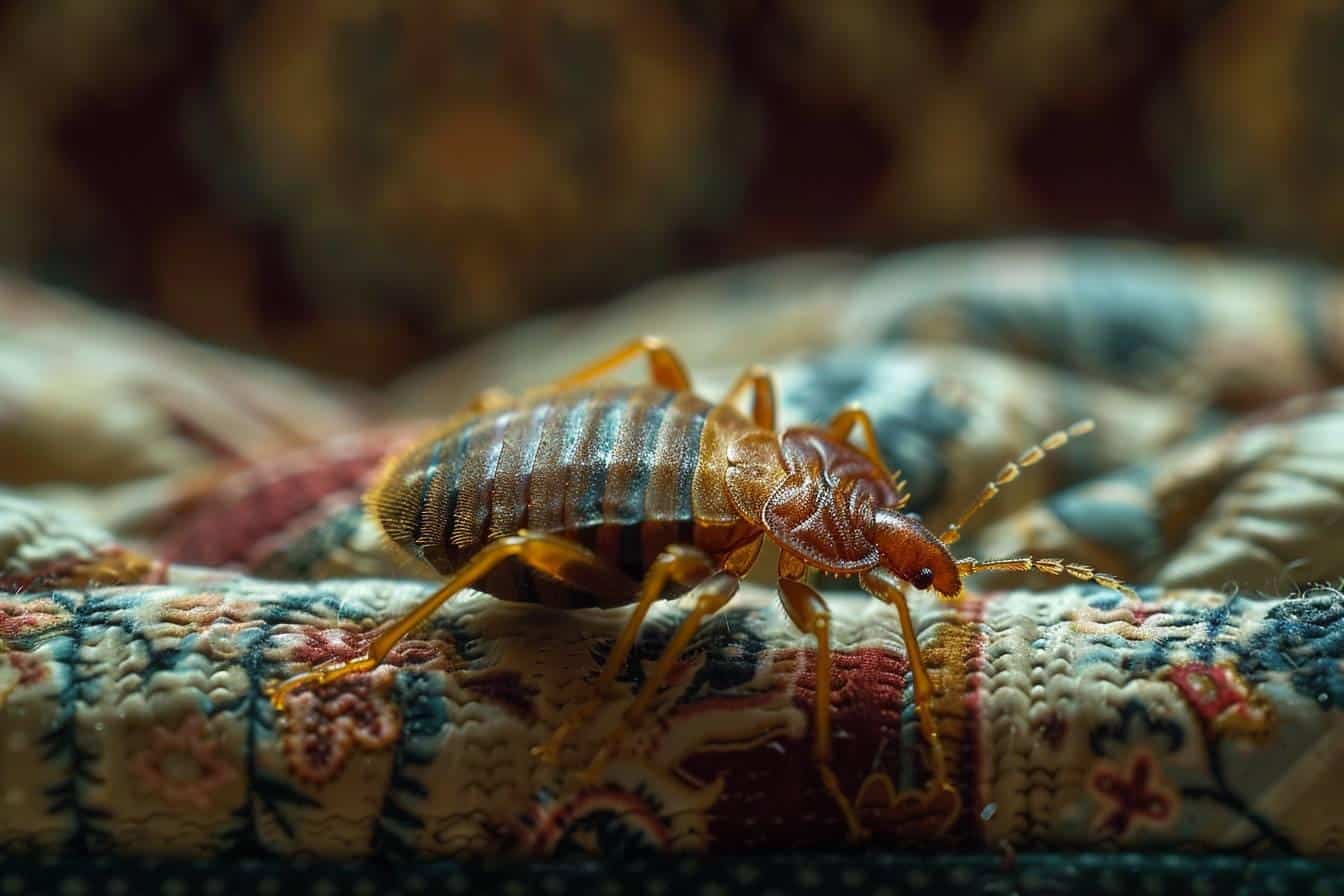Bed bugs are notorious household pests that can quickly infest homes, causing sleepless nights and anxiety for residents. One crucial aspect of bed bug control is understanding their life cycle, particularly the egg stage. This article delves into the intricacies of bed bug eggs, providing expert insights on identification and elimination strategies.
Identifying bed bug eggs : Size, appearance, and location
Bed bug eggs are tiny, oval-shaped structures that measure approximately 1 mm in length. Their small size makes them challenging to spot with the naked eye, often requiring careful inspection or magnification. These eggs have a pearly white color and are slightly translucent, resembling miniature grains of rice.
To effectively identify bed bug eggs, it’s essential to know where to look. These pests typically lay their eggs in hidden, protected areas close to their feeding grounds. Common locations include :
- Mattress seams and tufts
- Box spring corners and edges
- Headboard crevices
- Furniture joints and cracks
- Baseboards and wall corners
When inspecting for bed bug eggs, use a flashlight and magnifying glass to thoroughly examine these areas. Pay close attention to any small, clustered white specks adhering to surfaces. Bed bugs often lay their eggs in groups, so finding multiple eggs in one location is a strong indicator of an infestation.
It’s worth noting that bed bug eggs are often accompanied by other signs of infestation, such as live bugs, shed skins, and dark fecal spots. These additional clues can help confirm the presence of bed bugs and gauge the severity of the infestation.
Life cycle and development of bed bug eggs
Understanding the life cycle of bed bugs is crucial for effective pest control. The egg stage is the beginning of this cycle, and knowing how long it takes for eggs to hatch can help in planning intervention strategies. Here’s a breakdown of the bed bug life cycle, focusing on the egg stage :
| Stage | Duration | Description |
|---|---|---|
| Egg | 6-10 days | Pearly white, oval-shaped |
| Nymph (5 instars) | 5-6 weeks | Translucent, gradually darkening |
| Adult | 4-6 months | Reddish-brown, apple seed-sized |
Bed bug eggs typically hatch within 6 to 10 days under optimal conditions. The temperature plays a significant role in the development process, with warmer temperatures accelerating hatching. Once the eggs hatch, tiny first instar nymphs emerge, ready to begin feeding and growing.
A single female bed bug can lay up to 500 eggs in her lifetime, typically depositing 1 to 5 eggs per day. This high reproductive rate contributes to the rapid spread of infestations and underscores the importance of early detection and intervention.
To effectively combat bed bug infestations, it’s crucial to target not only the adult bugs but also the eggs and nymphs. This comprehensive approach ensures that all life stages are addressed, preventing the continuation of the infestation cycle.

Effective strategies for eliminating bed bug eggs
Eradicating bed bug eggs requires a multi-faceted approach combining physical removal, heat treatments, and chemical applications. Here are some proven strategies for eliminating bed bug eggs :
- Vacuuming : Use a powerful vacuum cleaner with a HEPA filter to thoroughly clean infested areas. Pay special attention to seams, crevices, and other hiding spots where eggs might be present.
- Heat treatment : Expose infested items to high temperatures (above 120°F or 48.9°C) for at least 90 minutes. This method is particularly effective for clothing, bedding, and small furniture items.
- Steam cleaning : Apply steam directly to infested surfaces, ensuring the temperature reaches at least 160°F (71.1°C) to kill eggs instantly.
- Freezing : Place smaller items in a freezer at 0°F (-18°C) for at least four days to eliminate eggs and other life stages.
- Chemical treatments : Use EPA-registered insecticides specifically formulated to target bed bug eggs. Always follow label instructions and safety precautions.
When implementing these strategies, it’s essential to be thorough and persistent. Bed bug eggs are resilient and can survive in various conditions, making repeated treatments necessary for complete eradication.
Professional pest control services often employ a combination of these methods, along with specialized equipment and expertise, to effectively eliminate bed bug infestations. For severe or persistent infestations, seeking professional help is highly recommended.
Prevention and long-term management
While eliminating bed bug eggs is crucial, preventing future infestations is equally important. Implementing proactive measures can significantly reduce the risk of bed bug problems. Consider the following prevention strategies :
- Regularly inspect bedding, furniture, and luggage for signs of bed bugs
- Use protective encasements on mattresses and box springs
- Reduce clutter to minimize potential hiding spots
- Vacuum frequently, especially in bedrooms and living areas
- Be cautious when acquiring second-hand furniture or clothing
When traveling, take extra precautions to avoid bringing bed bugs home. Inspect hotel rooms upon arrival, keep luggage elevated and away from beds, and wash all clothing in hot water immediately upon returning home.
Educating yourself and others about bed bug prevention is key to long-term management. Stay informed about the latest bed bug control techniques and be vigilant in monitoring for signs of infestation. By combining prevention strategies with prompt action at the first sign of bed bugs, you can maintain a pest-free environment and enjoy peace of mind.
Remember, bed bug control is an ongoing process that requires diligence and patience. By understanding the nature of bed bug eggs and implementing effective elimination and prevention strategies, you can successfully manage and eliminate these persistent pests from your living spaces.

